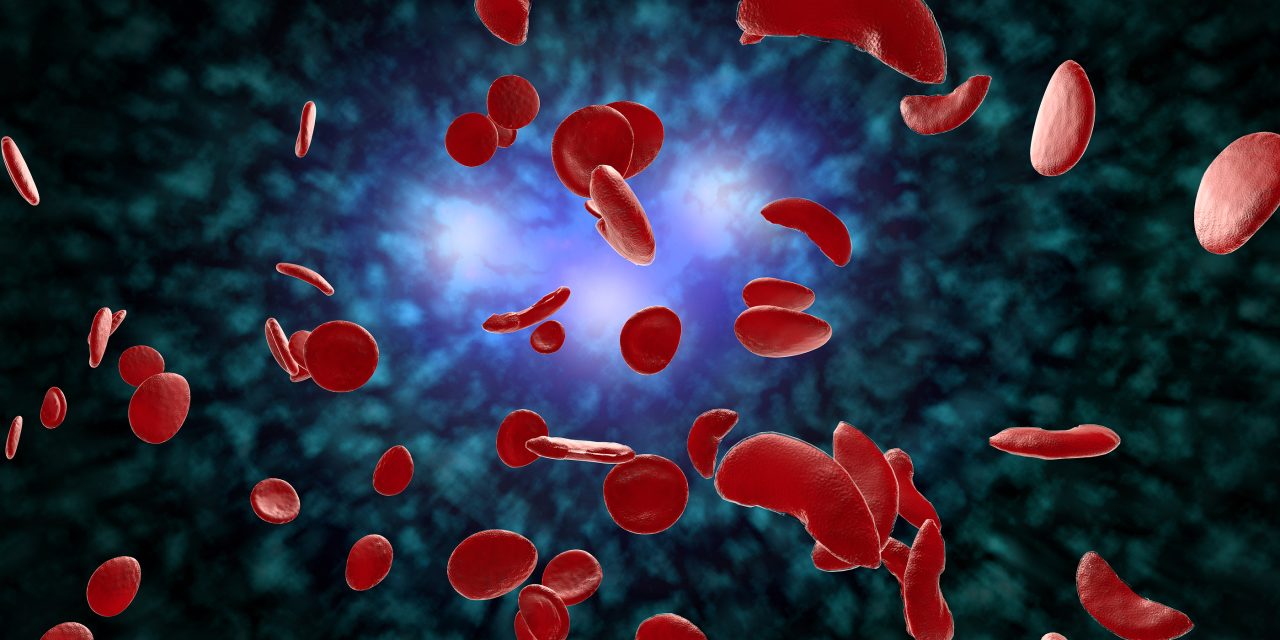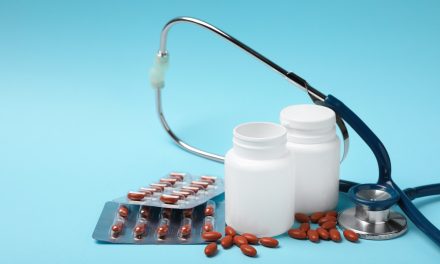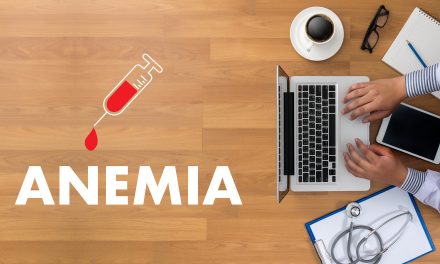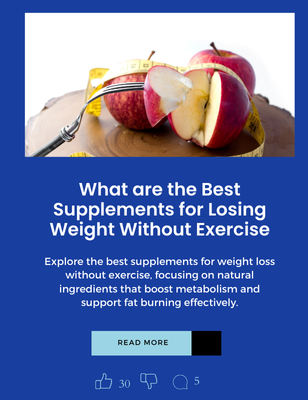Iron deficiency is one of the most common and widespread nutritional disorders in the world, impacting a diverse range of individuals across various demographics. It occurs when the body doesn’t have enough iron to produce hemoglobin, the protein in red blood cells that carries oxygen to the body’s tissues. The condition can result in anemia, where the blood lacks adequate healthy red blood cells, leading to fatigue and weakness among other symptoms. While there are several potential causes, dietary insufficiency is a prevalent source of iron deficiency in many populations. The consumption of iron-rich foods such as red meat, beans, and fortified cereals is critical for the prevention of iron deficiency, especially in individuals with high iron requirements like children and pregnant women.

In addition to dietary factors, physiological and lifestyle aspects play significant roles in iron deficiency. For instance, the body’s ability to absorb iron can be influenced by an individual’s overall health status, with certain medical conditions such as celiac disease or surgical procedures such as gastric bypass affecting iron absorption. Moreover, regular blood loss, whether from menstrual bleeding or internal bleeding conditions like ulcers, can deplete the body’s iron reserves. Lifestyle choices including adherence to a vegetarian or vegan diet without proper supplementation can also contribute to iron deficiency. Identifying and addressing these contributing factors is crucial for prevention and management of iron deficiency.
Medications that interfere with iron absorption, the impact of demographic variables such as age and sex, and the presence of medical conditions that either cause chronic blood loss or affect iron metabolism all factor into the risk of developing iron deficiency. To combat this, global health strategies recommend routine screening for at-risk populations, and the implementation of dietary and lifestyle modifications. Understanding the various dimensions of iron deficiency and adopting preventative measures are vital steps towards improving individual and population health outcomes.
Key Takeaways
- Iron deficiency is primarily caused by insufficient dietary intake, reduced absorption, or increased loss of iron.
- Lifestyle choices, physiological factors, and certain medical conditions can significantly contribute to iron deficiency.
- Prevention strategies include dietary adjustment, awareness of risk factors, and routine health screenings.
Iron’s Role in the Body
Iron is crucial for various functions within the human body. It is a key component of hemoglobin, the protein in red blood cells that transports oxygen from the lungs to the rest of the body. Without sufficient iron, the body cannot produce enough healthy oxygen-carrying red blood cells, leading to a condition known as anemia.
In addition to its role in hemoglobin, iron is necessary for the proper function of myoglobin, a protein that provides oxygen to muscles. This mineral also contributes to cellular respiration, whereby cells produce energy. Enzymes involved in creating energy and synthesizing DNA also rely on iron to function effectively.
The metabolic process electron transport chain, which takes place in the mitochondria of cells, also depends on iron-containing proteins. These proteins are central to energy production within the cells.
The body’s immune system is supported by iron as well, as it is essential for the growth and maturation of immune cells, particularly lymphocytes, which are critical in the body’s defense against pathogens.
Iron is also involved in the production of some hormones and connective tissues in the body. Deficiency in iron can lead to impaired cognitive function, decreased immunity, and poor regulation of body temperature.
| Function | Importance |
|---|---|
| Oxygen Transport | Vital for survival and physical activity |
| Energy Production | Crucial for cellular and muscle function |
| Immune System Support | Important for disease resistance |
| Hormone and Connective Tissue Production | Necessary for overall health |
The body carefully regulates iron levels to maintain these functions while preventing excess iron, which can be toxic. It is important for individuals, especially those at risk for iron deficiency, to monitor their iron intake through diet or supplementation as advised by health care professionals.
Dietary Causes of Iron Deficiency
One common dietary cause of iron deficiency is a low intake of iron-rich foods. Foods high in iron include:
- Red meat
- Poultry
- Fish
- Beans
- Lentils
- Tofu
- Fortified cereals
Individuals who consume limited amounts of these items may be at risk for iron deficiency.
Another dietary factor is the consumption of foods that inhibit iron absorption. These include:
- Tea and coffee, which contain polyphenols
- Dairy, rich in calcium
- Foods high in phytic acid, like whole grains and legumes
Combining iron-rich foods with foods high in vitamin C, such as oranges or tomatoes, can enhance iron absorption.
Additionally, certain dietary practices can lead to iron deficiency. For example, vegetarian or vegan diets can make it challenging to obtain sufficient heme iron, the type of iron most easily absorbed by the body. Non-heme iron found in plant-based foods is less readily absorbed, but careful meal planning can help avoid deficiencies.
Lastly, extreme diets that lead to an overall low food intake can contribute to inadequate iron levels. It is essential for individuals on restricted diets to monitor their iron intake to ensure they are getting an adequate amount.
Physiological Causes of Iron Deficiency
Iron deficiency can occur when the body’s iron requirements are not met due to inadequate absorption, increased demand, or chronic blood loss.
Malabsorption Syndromes
Iron absorption takes place primarily in the duodenum and upper jejunum. Malabsorption syndromes, such as celiac disease, can severely hinder the body’s ability to absorb iron. Individuals with gastrointestinal conditions or those who have undergone gastric surgeries face challenges in iron uptake due to the altered or damaged intestinal mucosa.
Menstruation-Related Losses
Regular menstrual cycles can result in significant iron loss for some women, particularly if menses are heavy. Without adequate dietary iron to compensate, this can lead to a negative iron balance. Monthly cycles are a recurring source that can diminish iron stores, especially if not monitored and managed.
Pregnancy and Increased Iron Needs
During pregnancy, a woman’s iron requirements increase significantly due to the growth of the fetus and placenta and the rise in her blood volume. Pregnant individuals need additional iron to support these physiological changes and to mitigate the risk of anemia, which can impact both the mother’s and baby’s health.
Lifestyle and Risk Factors
Lifestyle choices and certain risk factors can significantly impact an individual’s iron levels. These factors include dietary choices, the frequency of blood donations, and the level of athletic training.
Vegetarian and Vegan Diets
Individuals following vegetarian or vegan diets may be at an increased risk for iron deficiency as plant-based iron is less easily absorbed by the body. Including iron-rich foods like lentils, chickpeas, and spinach, and combining them with vitamin C-rich foods to enhance absorption, is crucial.
- Foods to include for enhanced iron absorption:
Plant-based Iron Sources Vitamin C Sources Lentils Oranges Chickpeas Bell peppers Spinach Strawberries Fortified cereals Kiwi Tofu Broccoli
Frequent Blood Donations
Regular blood donors, especially women, are more susceptible to iron depletion, as each blood donation can remove 200 to 250 mg of iron from the body. Blood donation centers may recommend spacing donations and taking iron supplements.
- Recommendations for frequent donors:
- Limit donations to once every three months.
- Consider iron supplementation or an iron-rich diet.
High-Performance Athletics
Athletes, particularly those involved in endurance sports, are at risk for iron deficiency due to increased iron losses through sweat, urine, and gastrointestinal bleeding. Assessment of iron status and dietary adjustments are often necessary to maintain optimal iron levels.
- Strategies for athlete iron maintenance:
- Monitor ferritin levels bi-annually.
- Incorporate iron-fortified foods or supplements as advised.
Demographic Variables
Iron deficiency affects various population groups differently due to specific physiological and lifestyle factors.
Infants and Young Children
Infants and young children are at heightened risk for iron deficiency due to rapid growth rates and often insufficient iron intake. Breast milk provides adequate iron up to the age of around six months; afterward, additional iron is needed.
Adolescent Girls and Women of Reproductive Age
Menstruation and the increased iron demands of pregnancy put adolescent girls and women of reproductive age at risk. Iron needs are particularly high during pregnancy due to the requirements of the developing fetus.
Elderly Population
Iron deficiency in the elderly population can result from a combination of factors, including reduced dietary intake, chronic diseases, and less efficient absorption of dietary iron.
Medical Conditions Linked to Iron Deficiency
Iron deficiency can be a result of various medical conditions that impair iron absorption or cause chronic blood loss. The following medical issues are key contributors to the development of iron deficiency.
Inflammatory Bowel Disease
Individuals with Inflammatory Bowel Disease (IBD) such as Crohn’s disease or ulcerative colitis often experience reduced iron absorption. The chronic inflammation in the gastrointestinal tract can lead to blood loss and malabsorption of nutrients, which includes iron.
Celiac Disease
Celiac disease damages the lining of the small intestine due to an autoimmune response to gluten. This damage impairs the body’s ability to absorb iron and other nutrients properly, which can result in iron deficiency.
Chronic Kidney Disease
Patients with chronic kidney disease (CKD) may suffer from iron deficiency due to a reduction in the kidney’s ability to produce erythropoietin, a hormone that stimulates red blood cell production. Additionally, frequent blood tests and reduced dietary iron intake contribute to lower iron levels in individuals with CKD.
Medications that Affect Iron Absorption
Certain medications can significantly impact the body’s ability to absorb iron. It is crucial to be aware of these when diagnosing or treating iron deficiency.
Proton Pump Inhibitors (PPIs):
These are commonly used to treat acid reflux and peptic ulcers. They reduce the amount of stomach acid which is necessary for iron absorption. Examples include omeprazole and lansoprazole.
H2 Receptor Antagonists:
Similar to PPIs, these also lower stomach acid production, potentially affecting iron absorption. Common H2 antagonists are cimetidine and ranitidine.
Antacids:
Frequently used for quick relief of stomach upset, antacids can interfere with iron absorption, especially when they contain calcium.
Chelators:
Drugs like penicillamine, used for Wilson’s disease or rhematoid arthritis, can bind to iron and limit its availability to the body.
Calcium Supplements:
Calcium competitively inhibits iron absorption when taken together. It’s advised to space the intake of calcium and iron supplements.
Table 1: Impact of Medications on Iron Absorption
| Medication Type | Examples | Mechanism of Interaction |
|---|---|---|
| Proton Pump Inhibitors | Omeprazole | Reduces stomach acid, crucial for iron absorption |
| H2 Receptor Antagonists | Cimetidine | Lowers stomach acid production |
| Antacids | Calcium Carbonate | May interfere with iron absorption |
| Chelators | Penicillamine | Binds to iron, reducing availability |
| Calcium Supplements | Calcium Citrate | Competitively inhibits iron absorption |
Patients on these medications should be monitored for iron levels, and doctors may recommend iron supplementation or adjusting medication schedules to mitigate interference. It’s essential to consult healthcare professionals for individualized guidance.
Blood Loss and Iron Deficiency
Blood loss is a primary factor in the development of iron deficiency, as it leads to the direct loss of iron-rich blood cells. This condition can be exacerbated by chronic blood loss that often goes unnoticed until iron deficiency anemia develops.
Gastrointestinal Bleeding
Gastrointestinal bleeding is a significant source of chronic blood loss leading to iron deficiency. Common causes include:
- Peptic ulcers: These often result from Helicobacter pylori infections or prolonged use of nonsteroidal anti-inflammatory drugs (NSAIDs).
- Colorectal cancer: This can cause latent blood loss that may be detected in stools.
- Gastritis and esophagitis: Inflammation of the stomach and esophagus can cause bleeding.
Surgical Procedures
Surgical procedures can also result in considerable blood loss and, consequently, a decrease in iron levels. Notable examples include:
- Major surgeries: Operations such as hip or knee replacements often lead to significant blood loss.
- Childbirth: Postpartum hemorrhage is a common cause of acute blood loss.
- Repeated surgeries: Patients undergoing frequent operations may cumulatively lose substantial amounts of blood.
Global Health Perspective on Iron Deficiency
Iron deficiency is a prevalent nutritional disorder affecting populations worldwide. It is particularly common in low- and middle-income countries, where access to iron-rich foods is limited, and in populations with increased iron requirements, such as pregnant women and young children.
- Prevalence: Globally, iron deficiency is the most common cause of anemia. An estimated two billion people—over 30% of the world’s population—are anemic, many due to iron deficiency.
- High-Risk Groups:
- Pregnant women: They require more iron to support fetal growth.
- Infants and children: Rapid growth periods demand more iron.
- Women of reproductive age: Menstruation increases iron loss.
Factors contributing to iron deficiency include:
- Dietary Intake: Insufficient consumption of iron-rich foods like meat, beans, and fortified cereals leads to inadequate iron levels.
- Malabsorption: Conditions such as celiac disease can impair iron absorption in the gut.
- Blood Loss: Chronic blood loss, often from the gastrointestinal tract or during menstruation, depletes iron stores.
- Infections and Diseases: Some diseases, including malaria and HIV, can affect iron status.
Efforts to combat iron deficiency include:
| Strategy | Description |
|---|---|
| Dietary Diversification | Including more iron-rich foods in diets. |
| Iron Supplementation | Providing iron pills or syrups to at-risk groups. |
| Food Fortification | Adding iron to staple foods like flour and rice. |
| Improved Public Health Interventions | Addressing parasitic infections and chronic diseases that affect iron absorption and metabolism. |
Recognition of iron deficiency as a public health issue has led to the implementation of regional and global strategies targeting the conditions leading to inadequate iron levels. These measures are essential for improving health outcomes, cognitive function, and overall quality of life in affected populations.
Prevention and Dietary Strategies
To prevent iron deficiency, individuals are advised to include iron-rich foods in their diet. Two forms of dietary iron exist: heme iron, which is easily absorbed and found in animal products, and non-heme iron, which is found in plant-based foods and is not absorbed as efficiently.
Incorporating the following foods can help improve iron intake:
- Heme iron sources:
- Red meats (beef, lamb)
- Poultry (chicken, turkey)
- Seafood (fish, shellfish)
- Non-heme iron sources:
- Legumes (lentils, chickpeas)
- Nuts and seeds (pumpkin seeds, almonds)
- Grains (quinoa, fortified cereals)
- Vegetables (spinach, kale)
Additionally, combining non-heme iron sources with foods rich in vitamin C can enhance iron absorption. For example, adding bell peppers to a black bean salad or consuming orange juice with a fortified breakfast cereal.
To further aid in prevention, individuals should be aware of substances that can inhibit iron absorption. They should aim to limit the intake of:
- Calcium-rich foods and supplements alongside iron-rich meals
- Tannins from tea and coffee
- Phytates from whole grains and legumes
- Polyphenols in some fruits and vegetables
It is important to find a balance that includes a variety of foods and consider consultation with a healthcare provider for personalized dietary advice, especially for individuals at higher risk of deficiency, such as pregnant women, young children, and those with certain medical conditions.
Diagnosis and Clinical Assessment
When suspecting iron deficiency, healthcare professionals conduct a thorough clinical assessment and order specific diagnostic tests. They begin with a detailed medical history and a physical examination. Key points of interest include dietary habits, family history of anemia, gastrointestinal symptoms, and any history of blood loss.
Diagnostic testing typically involves:
- Complete Blood Count (CBC): A CBC is performed to check levels of red blood cells, hemoglobin, and hematocrit. Low levels may indicate anemia.
- Serum Iron Test: This test measures the amount of iron in the blood to see if it’s lower than normal.
- Ferritin Test: Ferritin indicates the amount of iron stored in the body. Low levels suggest iron deficiency.
- Transferrin Saturation: Transferrin is a protein that carries iron in the blood. This test helps determine how much transferrin is carrying iron.
Additional tests that may be ordered include:
- Reticulocyte Count: To measure how fast red blood cells are made and released by the bone marrow.
- Stool Occult Blood Test: To check for blood in the stool which may point to internal bleeding.
Diagnostic criteria for iron deficiency involve not only low hemoglobin levels but also reduced serum ferritin and iron levels coupled with high total iron-binding capacity. Healthcare providers assess these indicators cautiously, considering individual differences in patients. For accurate assessment, they may repeat tests or employ additional modalities such as bone marrow biopsies for a definitive diagnosis.
Frequently Asked Questions
Iron deficiency is a prevalent condition typically resulting from inadequate dietary intake, chronic blood loss, impaired absorption, or certain medical conditions. Recognizing the factors and signs of iron deficiency is critical for effective management.
What dietary factors can lead to iron deficiency?
Individuals consuming a diet low in iron-rich foods, such as red meat, beans, and fortified cereals, may develop iron deficiency. Vegetarians and vegans are particularly at risk as they abstain from heme iron sources, which are better absorbed by the body.
How might chronic blood loss cause iron deficiency?
Chronic blood loss, often due to conditions like peptic ulcers, hemorrhoids, or menstruation, can deplete the body’s iron stores. Frequent blood donation and certain medications that cause gastrointestinal bleeding can also contribute to this loss.
What are some common signs that might indicate iron deficiency?
Symptoms of iron deficiency often include fatigue, weakness, pale skin, shortness of breath, and brittle nails. Individuals might also experience a tingling sensation in the legs, restless legs syndrome, or an unusual craving for non-nutritive substances like dirt or ice.
In what ways can certain medical conditions contribute to iron deficiency?
Medical conditions like celiac disease, inflammatory bowel disease, or gastric bypass surgery can impair the absorption of iron. Additionally, chronic kidney disease may affect the body’s ability to produce the hormone that stimulates red blood cell production.
How does the body’s ability to absorb iron impact iron levels?
The body’s ability to absorb iron is crucial for maintaining adequate iron levels. Factors that can impair absorption include gastrointestinal disorders, certain medications, and a lack of accompanying nutrients like vitamin C which enhances iron absorption.
What differences are there in iron deficiency causes between men and women?
Women, especially those of childbearing age, are more susceptible to iron deficiency due to menstrual blood loss and the increased demands of iron during pregnancy. Men are less likely to experience iron deficiency unless they have underlying conditions that cause blood loss or malabsorption.
Conclusion
In conclusion, iron deficiency can stem from various factors, including inadequate dietary intake, poor absorption, and increased iron requirements. Unraveling the specific cause of iron deficiency is crucial for developing an effective treatment plan. By addressing dietary and absorption issues, individuals can work towards replenishing iron levels and supporting their overall health. Seeking medical advice and considering dietary adjustments are essential steps in addressing the major causes of iron deficiency.




















